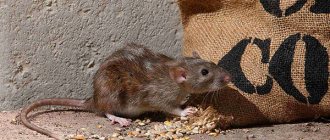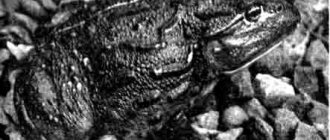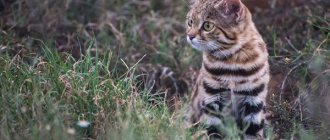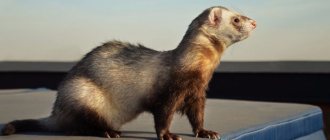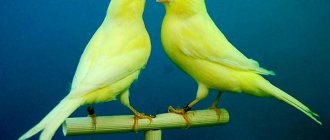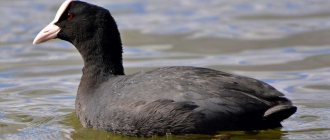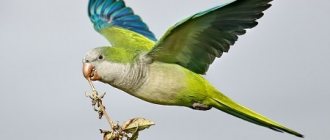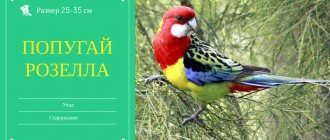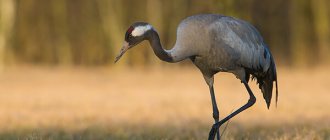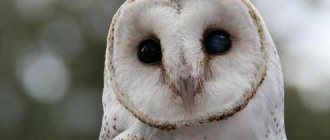Warblers (lat. Sylviidae) belong to the warbler family of the same name; this is the largest family among songbirds. This also includes mockingbirds, warblers, warblers and other species. Warblers are very secretive; they try to stay in dense grass or thickets of bushes; they can rarely be seen on the ground. These are migratory birds; they return from wintering in late spring. They prefer abandoned gardens, parks, sparse forests, and thickets near water bodies. The following types of warblers are found in Russia:
Currant or garden warbler. This bird has a dark gray-olive back and a light gray belly. The tail is straight, monochromatic, the paws are brown. The garden warbler weighs little; the bird has a small, proportional head, colored brown. It differs from mockingbirds in the absence of light stripes above the eyes. Females are slightly lighter than males, but sexual dimorphism cannot be recognized at first glance. After molting, the color is always brighter; young animals have uniform plumage. The garden warbler flies to Africa for the winter and is common in many countries in Europe and Asia.
photo: Garden warbler or currant dump
Gray warbler (talker). The gray warbler is almost invisible in the dense foliage of trees. Males have an ash-gray head with a whitish throat, brown back and tail. White spots can be seen on the outer tail feathers. There are reddish stripes on the wings, the belly is white, with a barely noticeable pinkish tint. Females have a gray chest and a brown head. The body length of the bird is up to 14 centimeters. The species is widespread throughout Europe; a special subspecies nests in the Caucasus and Crimea; warblers winter in Africa. The bird was nicknamed “Talker” because of its short song, reminiscent of someone’s conversation.
photo: White warbler or gray warbler
Whitethroat (miller's warbler). In appearance it resembles a gray warbler. The body length of the bird is 12-13 centimeters. She has a whitish throat, a gray head with dark cheeks. The back and wings are brown, but light rufous edges can be seen on the flight feathers. Birds that nest in the Caucasus have a gray back and a longer beak. This is the smallest warbler known to naturalists. In females, the color is duller, gray colors predominate. Distributed throughout Europe, but populations of this warbler are small.
photo: Whitethroat, aka miller
Black-headed Warbler. A small bird, body length up to 15 centimeters. She has a brownish-gray back, a silver-gray belly, and a plain straight tail. In males, the head is crowned with a black cap; in females and young animals this cap is red-orange. In Central Asia and Transcaucasia, such a subspecies as the white-whiskered warbler is common - it has a black spot not only on the crown, but also on the cheeks, the tail is not straight, but rounded. Most often, the blackhead can be found in thickets near water bodies, in large gardens or on the edges of forests.
photo: Black-headed Warbler
Hawk's Warbler. One of the largest subspecies, the body length of an individual reaches 19 cm. The warbler weighs up to 35 grams. The bird has a dark head with a silver tint and an olive-brown back. In the rump area there are two-color black and white feathers, the color of which resembles scales. The warbler's belly is whitish with a brown scaly pattern. This species of bird actually somewhat resembles a hawk, which is why it got its name.
photo: Hawk's Warbler
Warbler. The head of this warbler is black, the back, rump and part of the wing feathers are gray. Light stripes can be seen on the dark brown flight feathers. Tail feathers with white tips. The bird's abdomen is light, the sides are grayish, and the legs are dark. The females have a silver-black head, the young also resemble the female in color, but you can see light edges on the wings. The warbler is similar in size to a sparrow, weighing about 25 grams.
photo: Warbler
Description
A small bird the size of a sparrow or slightly smaller. Body weight 14–15 g, length from 13 to 15 cm, wingspan 66–77 mm. The male's head and back of the neck are ashen, the back and wings are brown. The tail is also brownish on top, with white tip feathers. The chest is creamy pink, the belly is whitish, and the throat is white. The wings have wide, rusty-brown edges. The female lacks the gray plumage of the head, it is rather brown, and the lower part of the body is whitish. The throat is whitish rather than white. The upperparts of juveniles are dark brown, the chest is light brown. When the bird lands, the rusty-brown wings characteristic of the species stand out. The legs and beak are pale gray. The eyes of males are bright orange, while those of females are yellow-brown to olive-brown.
Singing Gray Warbler, Scotland
Older females may also have gray heads, and males as young as two years of age may lose their gray head coloration. Both sexes are clearly distinguishable only at a young age. Age-related appearance features can be divided into 4 groups:
- Young birds with fresh plumage have gray eyes and constant feather color throughout the fall.
- One-year-old birds during the autumn molt - older feathers are larger, with a dark beige color at the edges. If the outermost tail feathers have not yet been replaced, their edges are light beige. After the change, they acquire a brownish tint and white blurred edges.
- Biennial birds in spring - the replaced tail feathers are very worn. If the feathers on the wings are not replaced, they are also quite worn out.
- Adult birds in the fall - there is no clear boundary between old and new feathers. The eyes are now orange and the outermost tail feathers are pure white. In spring, the plumage on the wings is moderately fresh.
Female, Oxfordshire, UK
It differs from the Accentor by the presence of a rufous color in the wings and light-colored legs. The Accentor's back is rather gray and without contrast between the back and head, and the tail is shorter in proportion to body length. The two species also have differences in behavior: the Great White Warbler often sings in the tops of bushes and trees, while the Accentor prefers to sing hidden in the bushes.
Pakistan
Reproduction
The nest is usually made at a height of 1-2 m from the ground on bushes or young trees, less often - on the lower branches of large trees. Construction begins 5-8 days after arrival. Construction usually takes 6 to 10 days. There are usually two clutches a year: the first - 5 eggs, the second - 4. The color of the eggs varies. More often they are grayish-whitish, with brownish or grayish spots. Both parents take part in incubation, replacing each other. Incubation lasts approximately 11-12 days. The chicks hatch naked and remain in the nest for 10-12 days. Sexual maturity occurs at the age of one year. Life expectancy can be 14 years.
Spreading
Inhabits almost all of Europe, except for the northern regions of the Scandinavian Peninsula, North-West Africa and Asia to Lake Baikal in Russia.
Winters in Central Africa, sub-Saharan Africa, the Arabian Peninsula, India and Pakistan. In European countries such as Bulgaria, it is found only during the nesting season, which begins in April. In Ukraine it is distributed throughout the entire territory. In early September they begin migrating to winter territories, and the last individuals leave their nesting sites in early October.
- Nesting range
- Migrations
- Wintering range
Offspring
In one season, the bird manages to make 2 clutches of eggs. The first occurs at the end of spring (May). A clutch can contain from two to four eggs. The second falls in June-July. Cuckoos very often throw their eggs into the nests of warblers, and they, in turn, raise other people's offspring. The incubation period is 11 days. The bird's eggs are whitish in color with numerous spots of lilac-gray and yellow-brown.
After the chicks hatch, parents take care of their offspring for 10-12 days. Having fledged, the babies begin to fly out of the nest in search of food. At this time, the parents feed the chicks throughout the week. The migration period occurs from September to November. The birds travel south to the tropical regions of Africa. After wintering, which ends in April, they fly to their native lands.
Subspecies
There are 4 subspecies:
- Sylvia communis communis: Western Europe, from Scandinavia to North Africa; winters in northern Africa.
- Sylvia communis volgensis from Eastern Europe to Western Siberia.
- Sylvia communis icterops: Western Siberia, Iran, Asia Minor; winters in eastern Africa.
- Sylvia communis rubicola: northeastern China, Mongolia and Kazakhstan; winters in South Africa.
Kinds
Russian names according to the Boehme and Flint dictionary[1]:
- Mountain warbler ( Sylvia althaea
) - Black-headed warbler ( Sylvia atricapilla
) - Balearic warbler ( Sylvia balearica
) - Sylvia Boehmi
- Garden warbler ( Sylvia borin
) - Yemen tit warbler ( Sylvia buryi
) - Subalpine warbler ( Sylvia cantillans
) - Gray warbler ( Sylvia communis
) - Spectacled warbler ( Sylvia conspicillata
) - Common whitethroat ( Sylvia curruca
), or miller's warbler - Atlas warbler ( Sylvia deserticola
) - Warbler ( Sylvia hortensis
) - Eastern warbler ( Sylvia crassirostris
) - Sylvia layardi
- Piebald warbler ( Sylvia leucomelaena
) - Sylvia lugens
- Mediterranean warbler ( Sylvia melanocephala
), or olive warbler - Cyprus warbler ( Sylvia melanothorax
) - Desert Accentor ( Sylvia minula
) - White-whiskered warbler ( Sylvia mystacea
) - Desert warbler ( Sylvia nana
) - African desert warbler ( Sylvia deserti
) - Hawk's warbler ( Sylvia nisoria
) - Rüppel's warbler ( Sylvia rueppelli
) - Sardinian warbler ( Sylvia sarda
) - Sylvia subcaerulea
- Provençal warbler ( Sylvia undata
)
Number
One of the most common warblers in the world. The range is extremely extensive. Although bird numbers are slowly declining, the decline is not considered fast enough to approach the vulnerability threshold. Globally, the trend shows a moderate decline in population size. However, Europe has seen a modest increase in bird numbers since 1980, based on preliminary data from 21 countries on the continent included in the overall bird-watching scheme. This distances the bird from the threshold of vulnerability, and the species is considered non-threatened based on range and abundance criteria. The species' population in Europe is estimated at 14–25 million breeding pairs, representing between 50 and 74% of the global population. In Ukraine - 1.46-1.9 million pairs, in Bulgaria - from 70,000 to 200,000 breeding pairs, in Serbia - 81,000-105,000 pairs. The population is distributed unevenly; there can be up to a dozen pairs in an area of 1 km2. According to initial monitoring data of common bird species, this species has a strong growth trend as in Europe. The global population in 2001 was estimated to be between 57 and 150 million birds. However, according to recent data, the number is declining.
Warblers at home
The agile little warblers thrive in captivity. If the bird has been caught recently, it may initially become restless by bumping into the cage. In these cases, cover the cage with a cloth and try not to disturb the bird. Within a few days, the singers usually get used to people and even begin to recognize the owner and greet his appearance with a ringing chant.
The character of Whiteroots is calm and very peaceful. Birds of other species may be aggressive towards them and offend songbirds, so it is better to place them separately.
Cage requirement
A spacious aviary or rectangular cage located away from drafts is suitable for keeping songbirds. The room temperature should not fall below 18-20 ° C, as these birds love warmth. In the enclosure it is necessary to place a perch, a feeder, a drinking bowl and a bath container. The cage is disinfected once a month.
Lifestyle and nutrition
Most common on the plains and slopes of the foothills. Inhabits open areas with bushes - pastures, meadows, desert lands, forest edges, gardens, arable lands and parks in populated areas. Selects areas that are necessarily overgrown with groups of shrubs - paliurus, rose hips and others, in which it nests. The presence of shrubs is of paramount importance to the welfare of birds. Threats to the gray warbler include the reduction and destruction of bushes in which the birds nest and the use of various pesticides. Avoids dense forests, especially completely coniferous ones.
Like most warblers, this species also feeds on insects, which it collects on the branches of trees and bushes and, quite rarely, on the ground. Eats beetles, mainly of the families of weevils and leaf beetles, hymenoptera, small flies, mosquitoes, spiders, larvae, mollusks, orthoptera, as well as butterflies and caterpillars. The young feed exclusively on very soft and delicate food - butterfly caterpillars, sawfly larvae, spiders.
grasmus
In autumn it also consumes small soft fruits and seeds, such as blackberries, raspberries, hawthorn and others. After the young leave the nest, adults and young begin to actively feed in order to accumulate fat necessary for long migration. Settling in gardens, they bring undeniable benefits, cleaning leaves, flowers and fruits from harmful insects.
Breeding warblers
In captivity, songbirds also mate and begin nesting. To do this, you need to plant the plants in a cage or aviary so that the birds can build a nest.
At one time, the female lays from 4 to 8 eggs, which are incubated by both parents in turn. After two weeks, the chicks are born.
Food for warblers
The main food of songbirds is various mixtures of cereals, pieces of fruits and vegetables, and berries (blueberries, raspberries, elderberries, currants). During nesting, their diet is enriched with animal food: insects, mealworms, ant eggs.
Singing
The song is fast, with a "squeaky" sound consisting of three descending tones. The sounds vaguely resemble “tir-li-vi-tir-li-chet-chit-chitirli”, and the alarm signal is a short, loud and ringing “check”. The beginning of the song is quiet, but the end is loud and abrupt. Like most warblers, it quickly perceives the chirping of other species and imitates it with pleasure. In its songs you can recognize the trills of the great tit, black-headed goldfinch or linnet. Unlike other species of warblers, the gray warbler also sings while flying.
Notes[ | ]
- Boehme R. L., Flint V. E.
Five-language dictionary of animal names. Birds. Latin, Russian, English, German, French / Under general. ed. acad. V. E. Sokolova. - M.: Russian language, RUSSO, 1994. - P. 344. - 2030 copies. — ISBN 5-200-00643-0. - ↑ 1 2 Simkin, Gennadij Nikolaevič (1935- ).
Pevčie bird. - Moskva: "Lesnaâ promyšlennost'", 1990. - 398, [2] s. With. — ISBN 5-7120-0285-X, 978-5-7120-0285-6.

